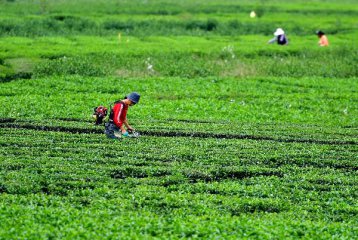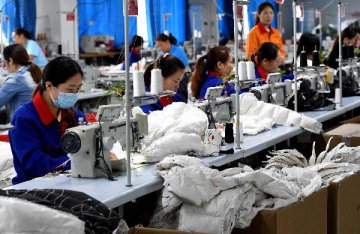
The Chinese government has promised more spending on transport improvements in poor regions for the next few years in the latest effort to realize its ambitious poverty reduction goals.
Vice minister of transport Dai Dongchang said Thursday that over half of vehicle purchase taxes, around 840 billion yuan (120 billion U.S. dollars), will be earmarked for rural road construction during the 13th Five-Year Plan (2016-2020), a substantial increase on the 550 billion yuan spent during the previous five years.
"There has been a shortfall in funding due to shrinking tax income since we cut or exempted duty on compact and new energy vehicles. But we will guarantee the spending despite any difficulties," Dai said at a press conference.
Besides central government spending, Dai expects support from banks and private investors. "We have agreements with policy banks for financial aid and will encourage local authorities to explore new financing channels, such as public-private-partnerships," he said.
Nearly 2 trillion yuan of private investment was used for highway construction in poor areas from 2011 to 2015, according to official data. Poverty relief is high on China's agenda.
Since the start of reform and opening-up in 1978, an economic boom has helped lift more than 700 million people out of poverty.
China was the first developing country to meet the United Nations Millennium Development Goal -- a 50 percent reduction in the number of people living in poverty by 2015. By the end of 2015, China still had 55.75 million people below the national poverty line of 2,800 yuan per year, equivalent to the entire population of a medium-sized country.
However, transport difficulties remained a major impediment to rural development, mainly in central and western regions.
The Ministry of Transport decided in August to expanded the area covered by a campaign to improve roads.
The area now includes old revolutionary bases, areas inhabited by ethnic minorities and remote border counties. A total of 236,000 km of rural roads were built or renovated in the first ten months of the year, meeting the target for the whole year early, Dai said.
Better transportation will lead to more effective development and utilization of mineral, energy and tourist resources in poor areas, accelerating the pace of poverty eradication.
In Ningxiang County, central China's Hubei Province, 2,000 km of new rural roads have helped tourism, creating 12,000 jobs and increasing per capita annual incomes by 15,000 yuan. By the end of last year, 96.1 percent of towns and 86.2 percent of villages in impoverished areas were connected by tarmac or cement roads with shuttle bus services.
At a meeting earlier this month, Chinese Premier Li Keqiang urged the government to channel more energy into rural infrastructure, including water conservation, renovations, power grids and telecom networks.
With the goal of building an all-round moderately prosperous society by 2020, China has been developing specialty industries, transferring employment, relocating people and extended social security coverage.
Analysts said improved transport facilities will lead to effective development and utilization of mineral resources, energy and tourist resources in poor areas, accelerating the pace of poverty eradication.
Poverty relief is high on China's 2016-2020 agenda, and the government has vowed to lift everybody out of poverty by 2020. By the end of 2015, China still had 55.75 million people living below the national poverty line of 2,800 yuan per year.
























Latest comments